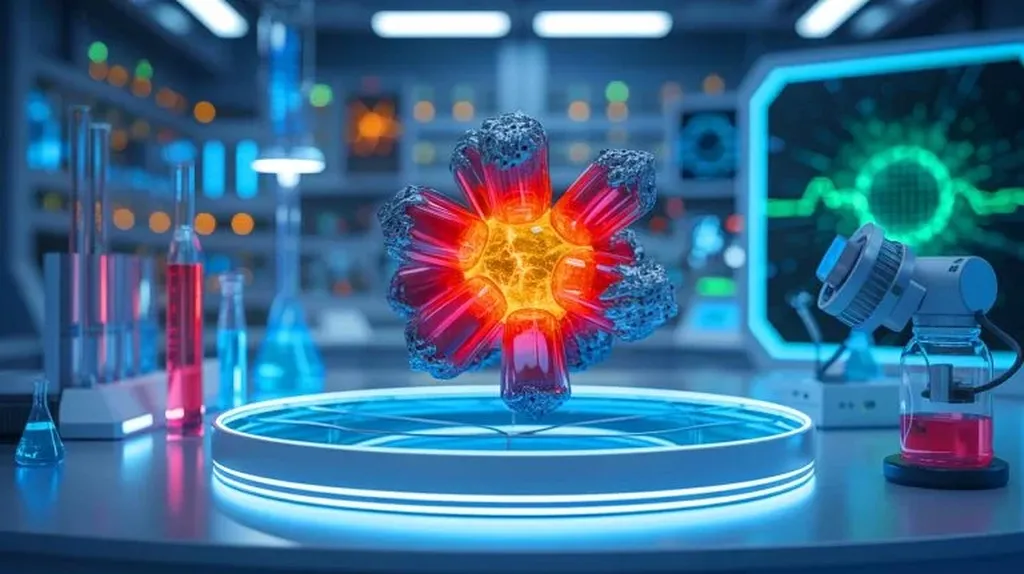In a quiet corner of Shanxi, China, researchers have unveiled a complex crystal structure that could hold significant implications for the energy sector. Dr. Wang Li-Fang, a professor at Lyuliang University’s Department of Chemical and Material Engineering, has published a study detailing the intricate architecture of a novel compound: bis(μ2-ferrocenylcarboxylato-O,O′)-(μ3-oxido-κ3O:O:O)-bis(μ2-salicyladoximato-κ2N,O,O′)-(μ2-isopropoxo)-tris(isopropoxy-κ1O)trititanium(IV). To put it more simply, this is a complex molecule containing titanium, iron, and various organic groups.
The compound, with the chemical formula C48H55N2O13Fe2Ti3, crystallizes in the monoclinic system, a common crystal system that includes many minerals and synthetic compounds. The crystal structure was determined using X-ray crystallography, a technique that allows scientists to map the atomic landscape of a crystal. The results were published in the journal “New Crystal Structures,” a publication of the German journal “Zeitschrift für Kristallographie.”
So, what does this mean for the energy sector? The compound’s unique structure, featuring titanium and iron centers, could pave the way for innovative catalytic processes. Catalysts are substances that speed up chemical reactions without being consumed in the process. They are crucial in many energy-related applications, from refining petroleum to producing hydrogen fuel.
“Catalysts are the silent workhorses of the chemical industry,” Dr. Wang explained. “By designing new catalysts, we can make chemical processes more efficient, more sustainable, and more economical.”
The potential applications of this research are vast. For instance, more efficient catalysts could lead to better utilization of resources in the energy sector, reducing waste and improving profitability. Moreover, as the world shifts towards greener energy solutions, catalysts will play a pivotal role in processes like hydrogen production and carbon capture and storage.
Dr. Wang’s research is a testament to the power of fundamental science. By exploring the intricate world of crystal structures, researchers can unlock new possibilities for technology and industry. As Dr. Wang put it, “Every new crystal structure is a new world to explore, a new opportunity to make a difference.”
The journey from a lab bench in Shanxi to real-world applications is long and complex. However, with continued research and development, this novel crystal structure could indeed shape the future of the energy sector. The study serves as a reminder that the pursuit of fundamental science, though often incremental and incremental, can yield breakthroughs that resonate across industries and borders.

